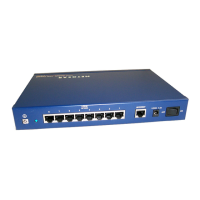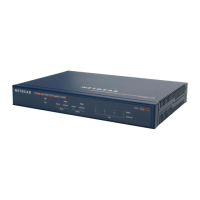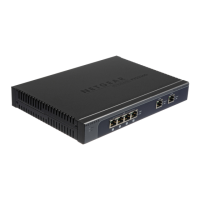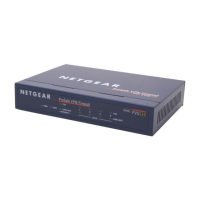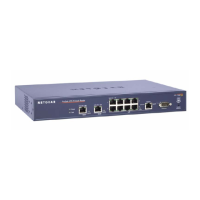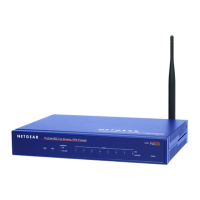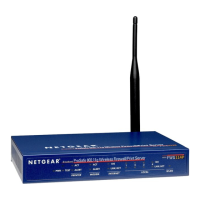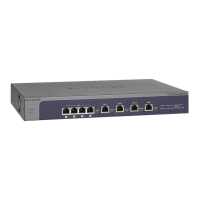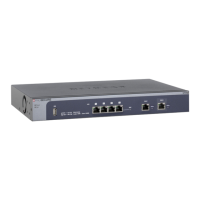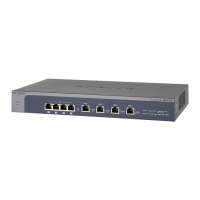Virtual Private Networking Using IPv4 SSL Connections
223
ProSafe Wireless-N 8-Port Gigabit VPN Firewall FVS318N
method that is used and the portal layout that is presented, which in turn determines
the network resources to which the users are granted access. Because you need to
assign a portal layout when creating a domain, the domain is created after you have
created the portal layout.
b. Crea
te one or more groups for your SSL VPN users.
When you define the SSL VPN policies that determine network resource access for
your SSL VPN users, you can de
fine global policies, group policies, or individual
policies. Because you need to assign an authentication domain when creating a
group, the group is created after you have created the domain.
c. Crea
te one or more SSL VPN user accounts.
Because you need to assign a group when crea
ting a SSL VPN user account, the
user account is created after you have created the group.
3. For port
forwarding, define the servers and services (see Configure Applications for Port
Forwarding on
page 227).
Create a list of servers and services that can
be made available through user, group, or
global policies. You can also associate fully qualified domain names (FQDNs) with these
servers. The wireless VPN firewall resolves the names to the servers using the list you
have created.
4. For SSL VPN tunn
el service, configure the virtual network adapter (see Configure the SSL
VPN Client o
n page 230).
For the SSL VPN tunnel option, the wireless VPN firewall creates a virtual network
a
dapter on the remote PC that then functions as if it were on the local network. Configure
the portal’s SSL VPN client to define a pool of local IP addresses to be issued to remote
clients, as well as DNS addresses. Declare static routes or grant full access to the local
network, subject to additional policies.
5. T
o simplify policies, define network resource objects (see Use Network Resource Objects to
Simplify Policies on p
age 233).
Network resource objects are groups of IP addresses, IP address ranges, and services.
By defining
resource objects, you can more quickly create and configure network policies.
6. Conf
igure the SSL VPN policies (see Configure User, Group, and Global Policies on
page 235).
Policies determine access to network resources and addresses for individual users,
g
roups, or everyone.
Create the Portal Layout
The Portal Layouts screen that you can access from the SSL VPN configuration menu allows
you to create a custom page that remote users see when they log in to the portal. Because
the page is completely customizable, it provides an ideal way to communicate remote access
instructions, support information, technical contact information, or VPN-related news updates
to remote users. The page is also well suited as a starting page for restricted users; if mobile
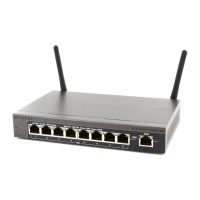
